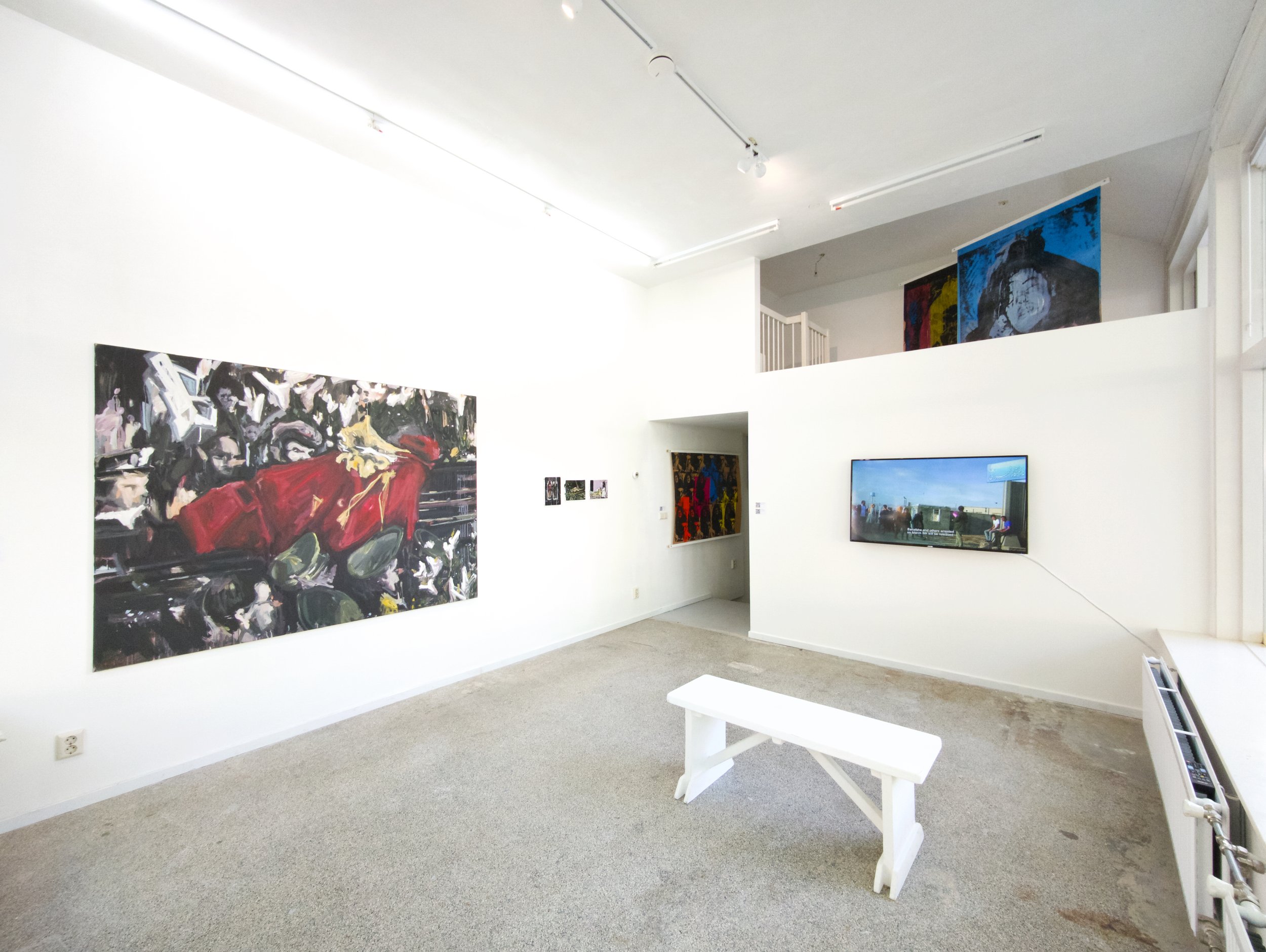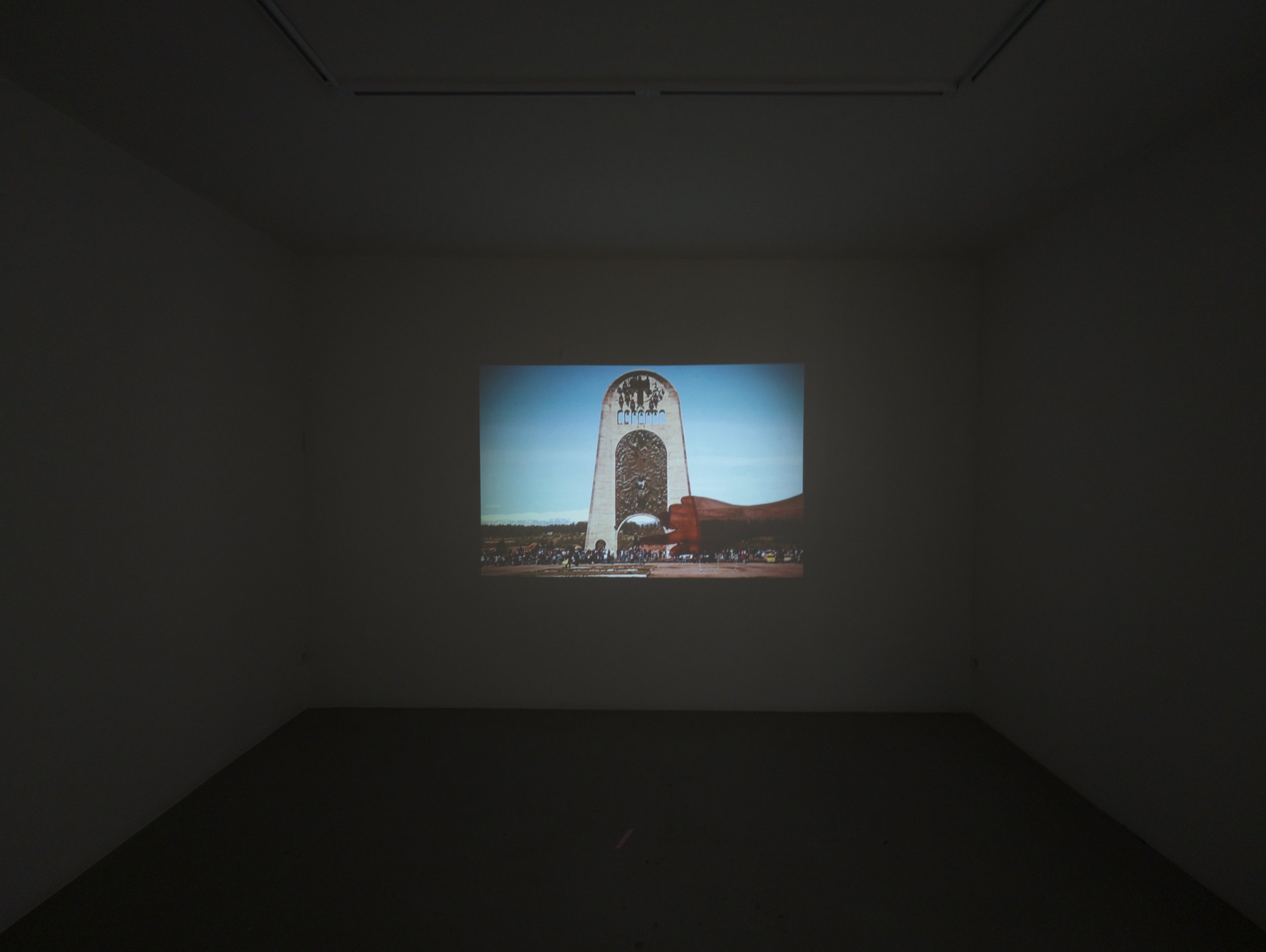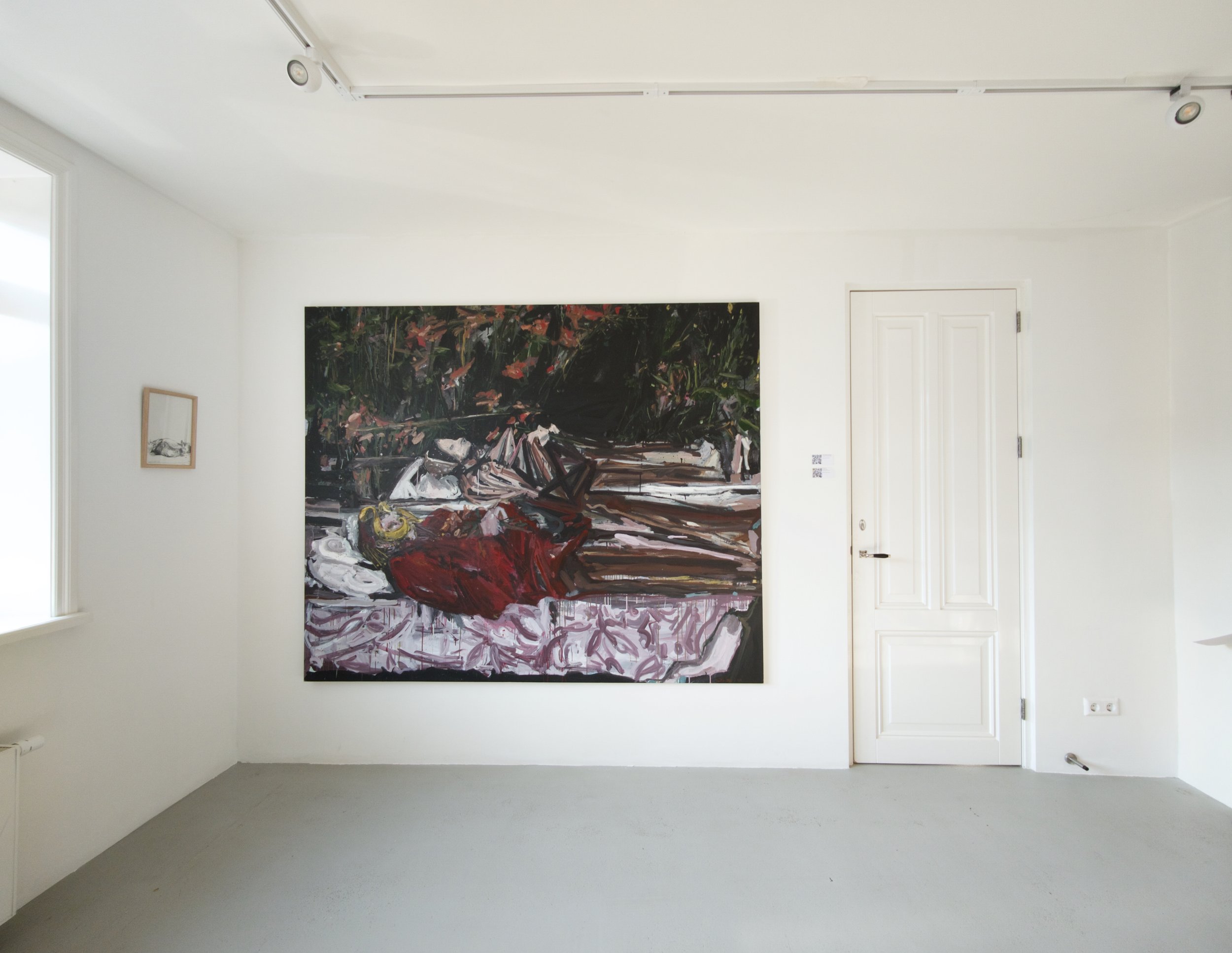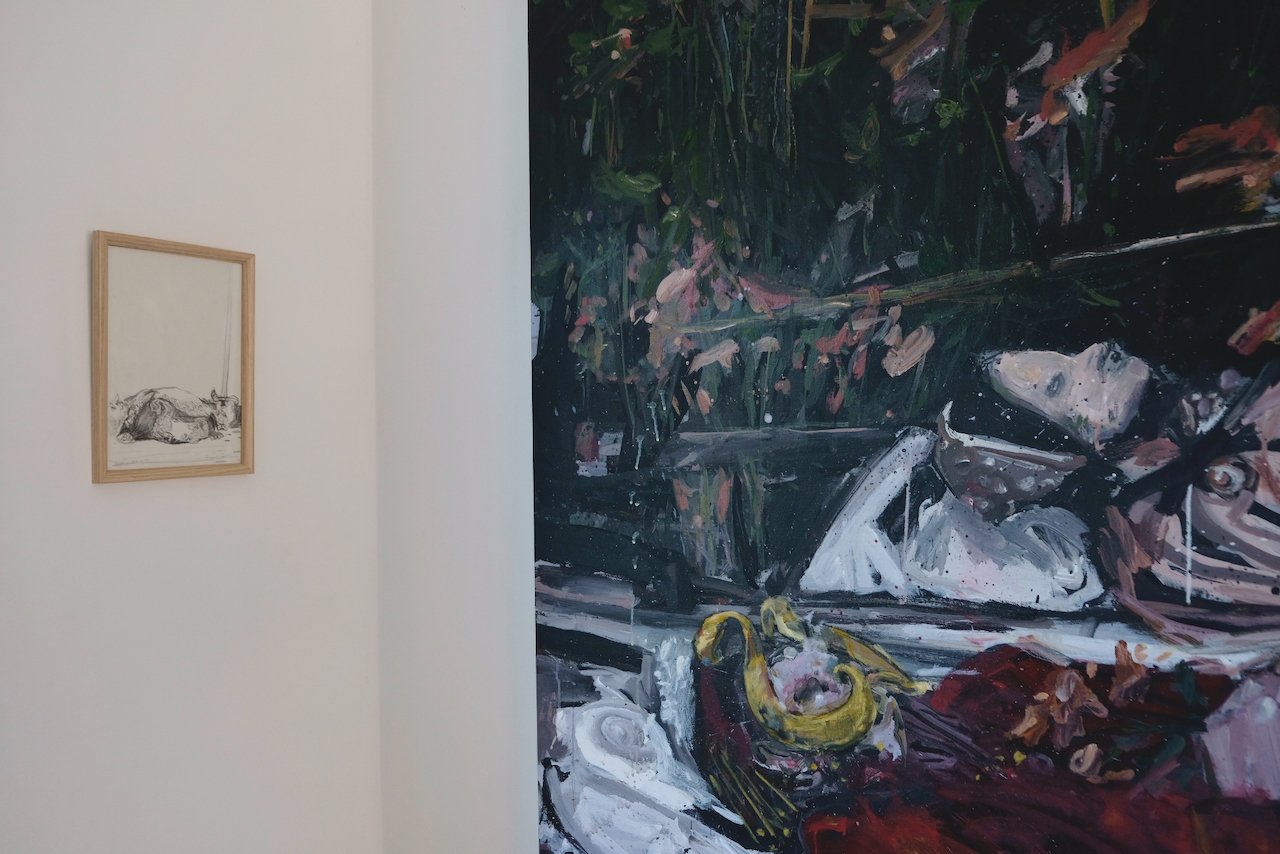Online Catalogue
Khosrow Hassanzadeh
Mina Keshavarz
Sanaz Sohrabi
Ramtin Zad
ONCE THERE WAS (N)ONE
Opening Tuesday 25 April 2023 from 5 - 8PM
25 April - 16 May 2023
Curated by Fereshte Moosavi
Amid times of ongoing cruelty, normalized violence, and never-ending war, this exhibition presents a number of artworks that counter the historical forgetfulness caused by such conflicts. Each artwork creates a monumental presence for the erased, oppressed, or marginalized beings and things. This is realized by combining the power of factual narratives with fictional tales that are founded on actual documentations, family archives as well as imaginary situations. The artworks include painting, drawing, sculpture, print, video and documentary by Khosrow Hassanzadeh, Mina Keshavarz, Sanaz Sohrabi and Ramtin Zad.
The Art of Living in Danger (2020) is a documentary by Mina Keshavarz that revolves around a monologue that the artist has written to her grandmother, Nuri, who she’s never met. Pressured by the traditional marriage at a young age, Nuri commits suicide at the age of thirty-five when pregnant with her eighth child. Made on the fiftieth anniversary of Nuri’s death, this film is an act of remembrance and a homage to Keshavarz’s grandmother as one of the many women whose life is affected by domestic violence. In the meantime, by following a group of female lawyers and activists in their campaign for criminalisation of domestic violence, Keshavarz documents the ongoing fight for gender equality and for ending normalized violence in Iran. With a similar approach, Khosrow Hassanzadeh’s Faheshe (2001) is a series of silk screen prints portraying a number of women who were victims of a chain murders in the city of Mashahd, north east of Iran over twenty years ago. By employing police documentations to print large, colorful and repetitive portraits of these women, not only Hassanzadeh challenges the ‘distorted ideology behind the criminal’s fundamentalist motivation’, but also, he creates a monumental appearance for these women as an act of remembrance.
These works are set against the backdrop of politically charged historical references that set a reminder of the bitterness of dominant states’ powers. Ramtin Zad’s series of paintings and drawings titled Last Ceremony (2018-2022) brings together a more dramatic and expressive presentation of the momentum of death, intertwined with political and fictional figures. His short video Smile Parade (2018) is an anti-monumental work in which he paints a clown portrait over every single face of the North-Koren and Russian armies while marching at an unknown special event. In continuation of questioning the long-established moral principles, counter-monuments are a way to reflect on the monuments’ message or lack thereof to reread history. Sanaz Sohrabi’s video art The Glory, the Human, and the Mother; a Cartography (2017) sets out on a journey to different locations of the former soviet union to search for three monuments that were demolished, altered or repurposed. Moving between the archival materials and documentations from the sites of the statuses we hear the artist's narration about the events that surround these monuments.
Image: The Glory, the Human, and the Mother: a Cartography, 2017, (film still), Sanaz Sohrabi, Video with sound, 17:35 minutes









